Abstract
The sensitivity of Rosa damascena cultured cells to chlorate was measured by plating samples of suspensions in agar containing NaClO3. This sensitivity depended on the age of the cultures that were plated. Chlorate-resistant colonies isolated from 5- to 7-day cultures retained their resistance through many generations of growth in medium lacking NaClO3; they also retained resistance when mixed with sensitive cells. Treating cell aggregates with ultraviolet (UV) light (254 nanometers), or UV light (360 nanometers) in the presence of 4′-methoxymethyltrioxsalen, increased the proportion that was resistant to NaClO3. However, the amount of increase was low (three times) and required very specific doses of UV light. The UV treatments did not select for chlorate-resistant cells over chlorate-sensitive cells. The data suggested that UV had induced mutations leading to chlorate resistance. Approximately 15% of the resistant strains did not grow on medium containing nitrate as the sole nitrogen source. These strains lacked ability to reduce chlorate to chlorite. This observation supports the current idea that chlorate toxicity depends on the activity of nitrate reductase. Approximately 85% of the resistant strains grew on medium containing nitrate as the sole nitrogen source. These strains lost catalase activity following chlorate treatment, indicating that they took up and reduced chlorate. These strains have a mechanism for tolerating chlorate and its reduction products, rather than avoiding them.
Full text
PDF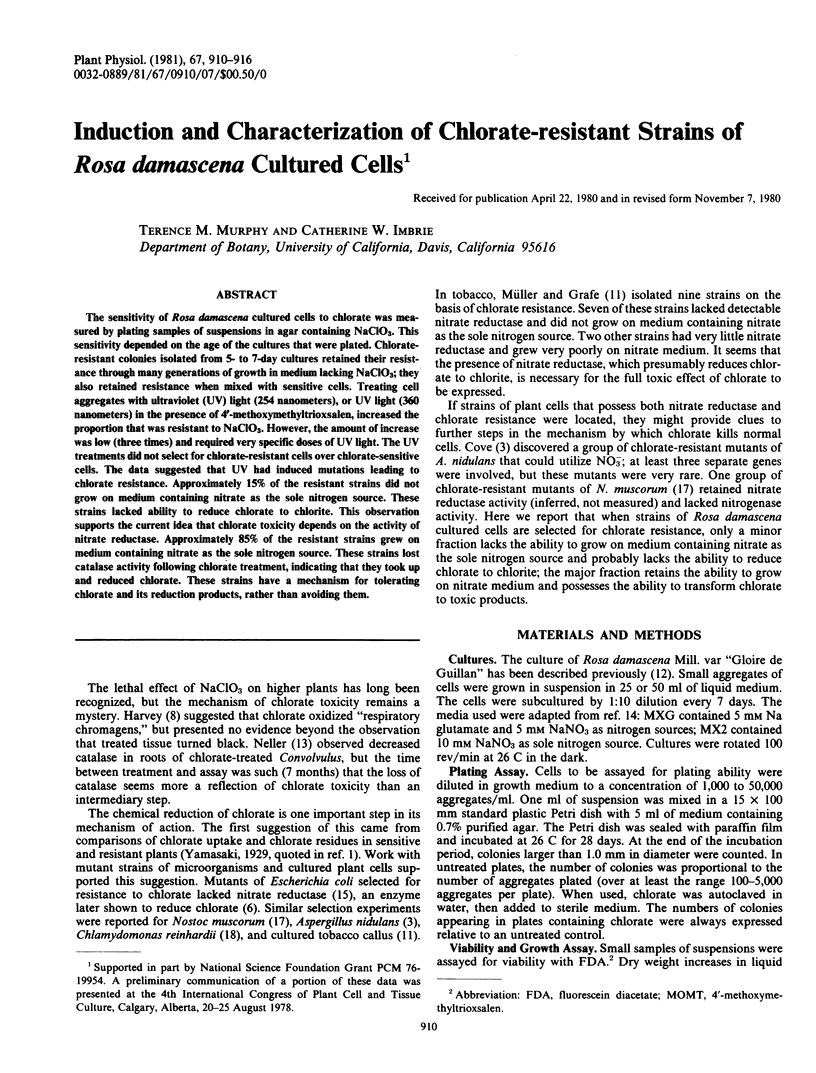
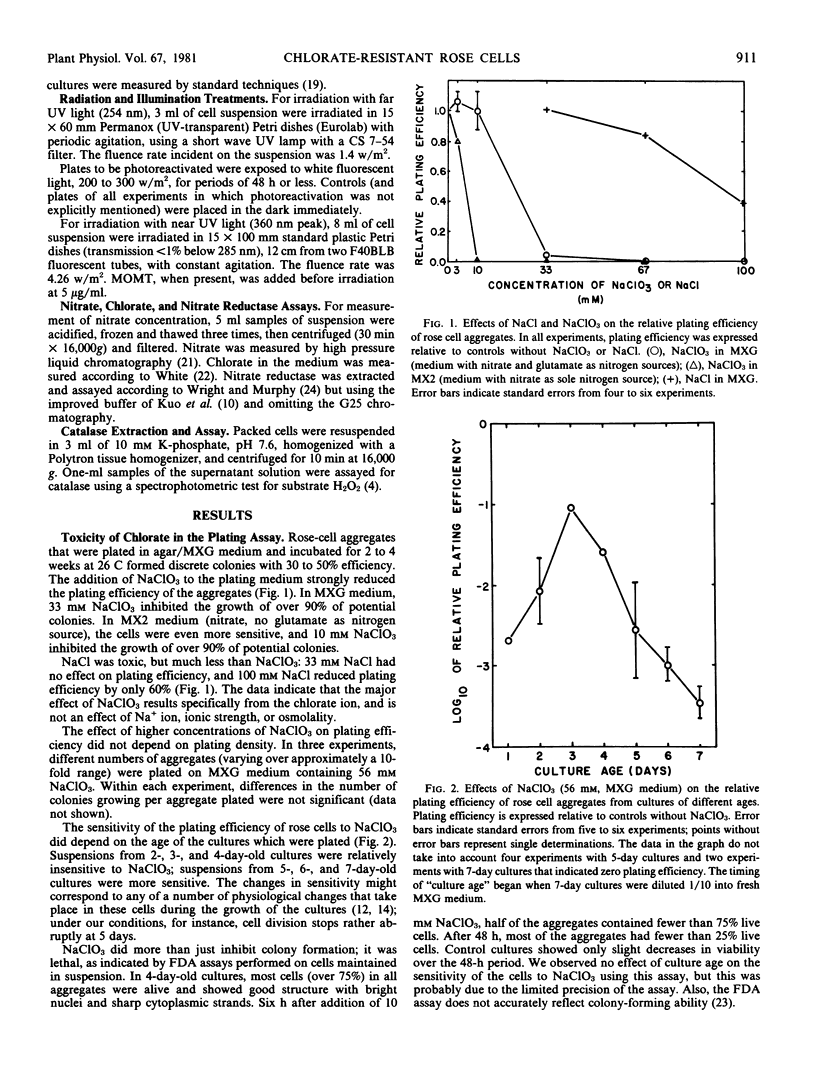
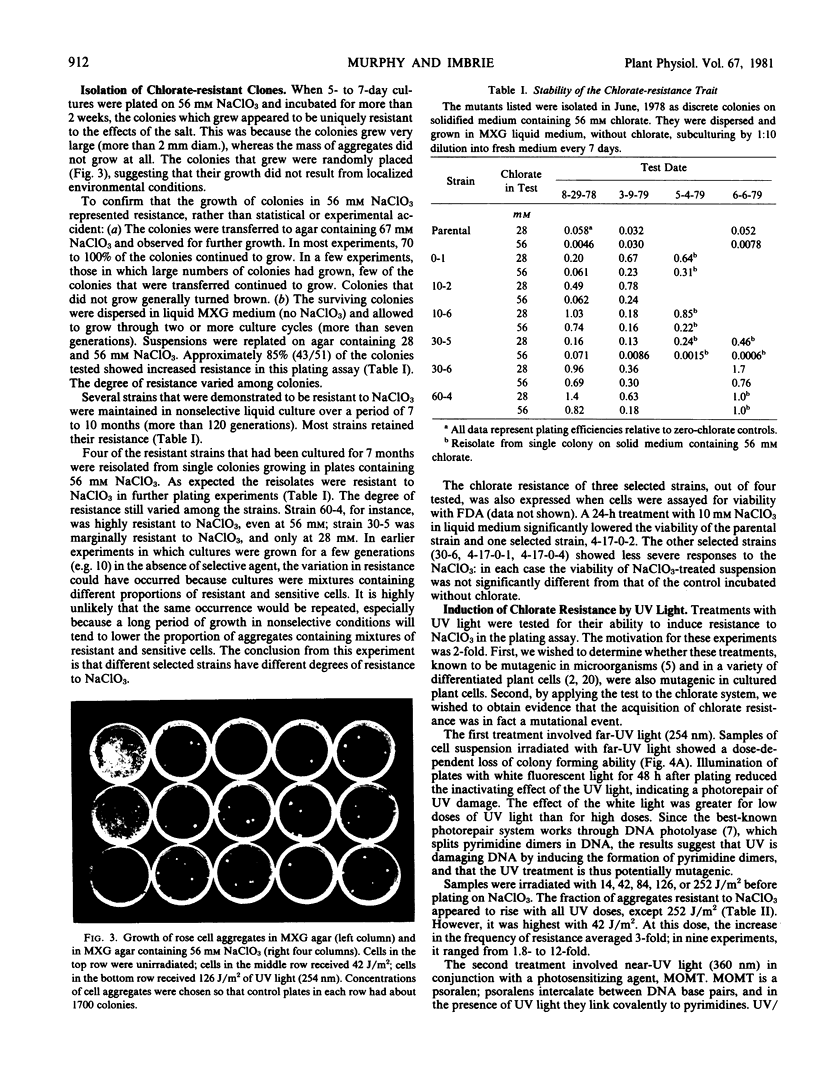
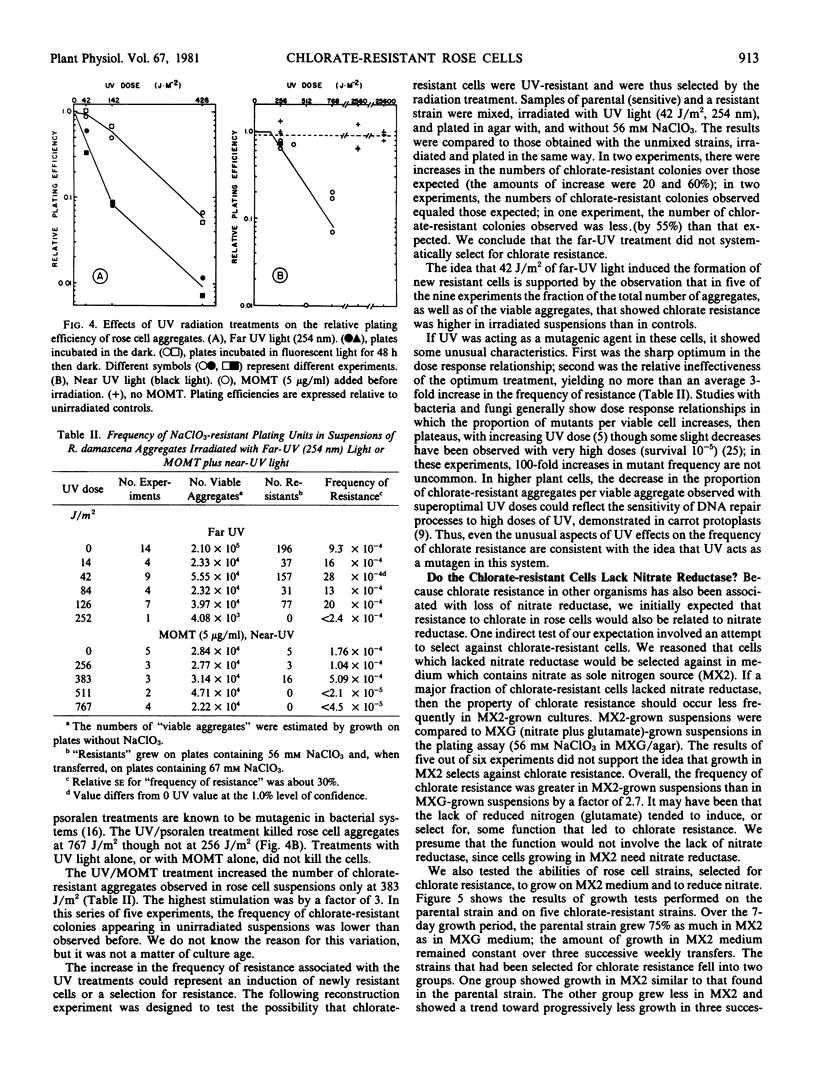
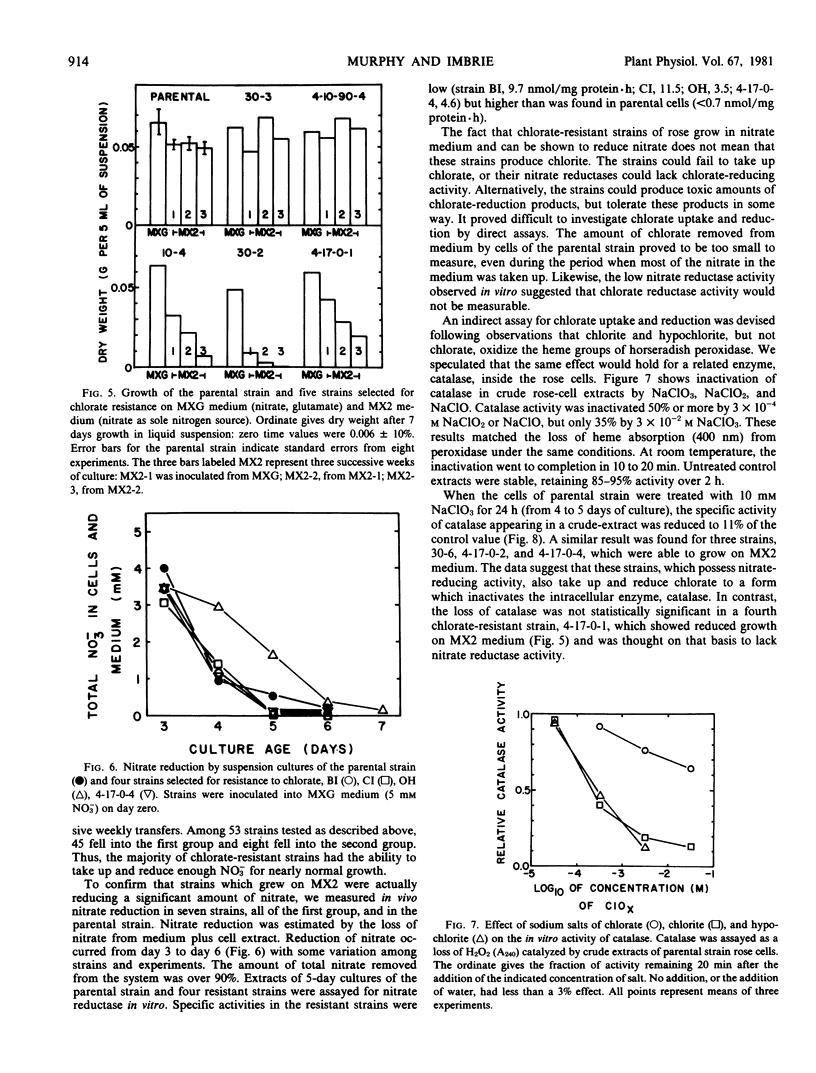
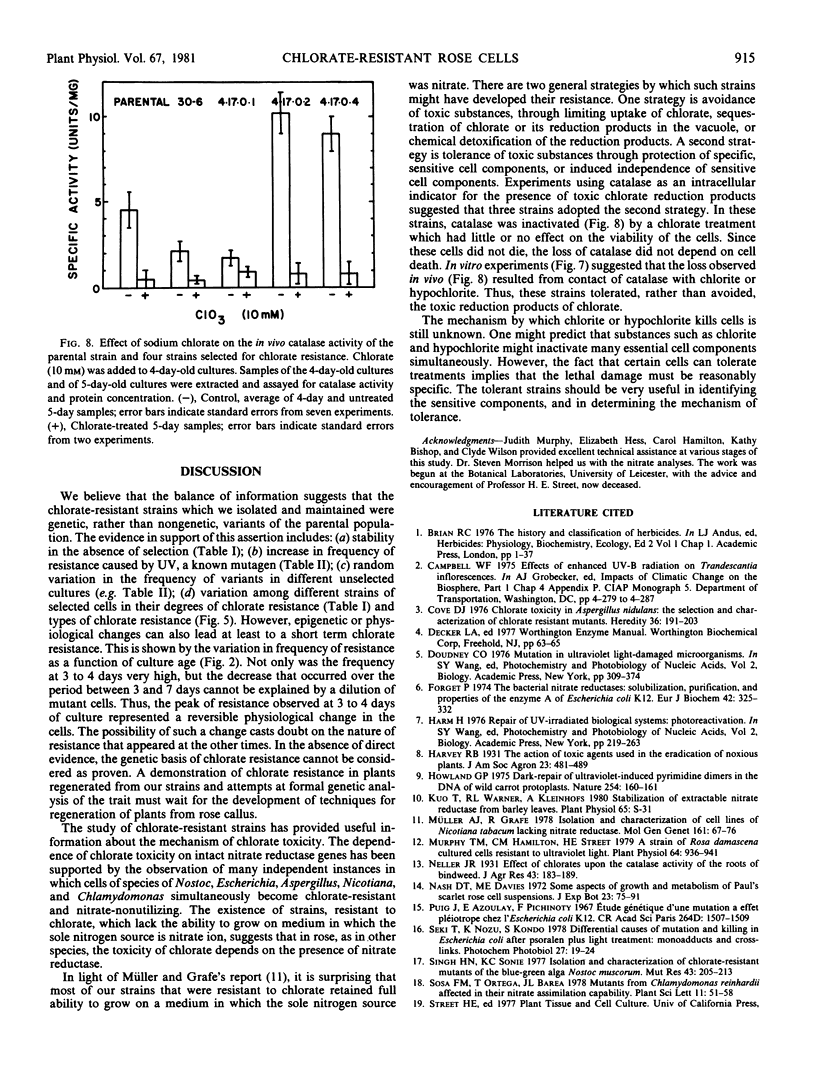
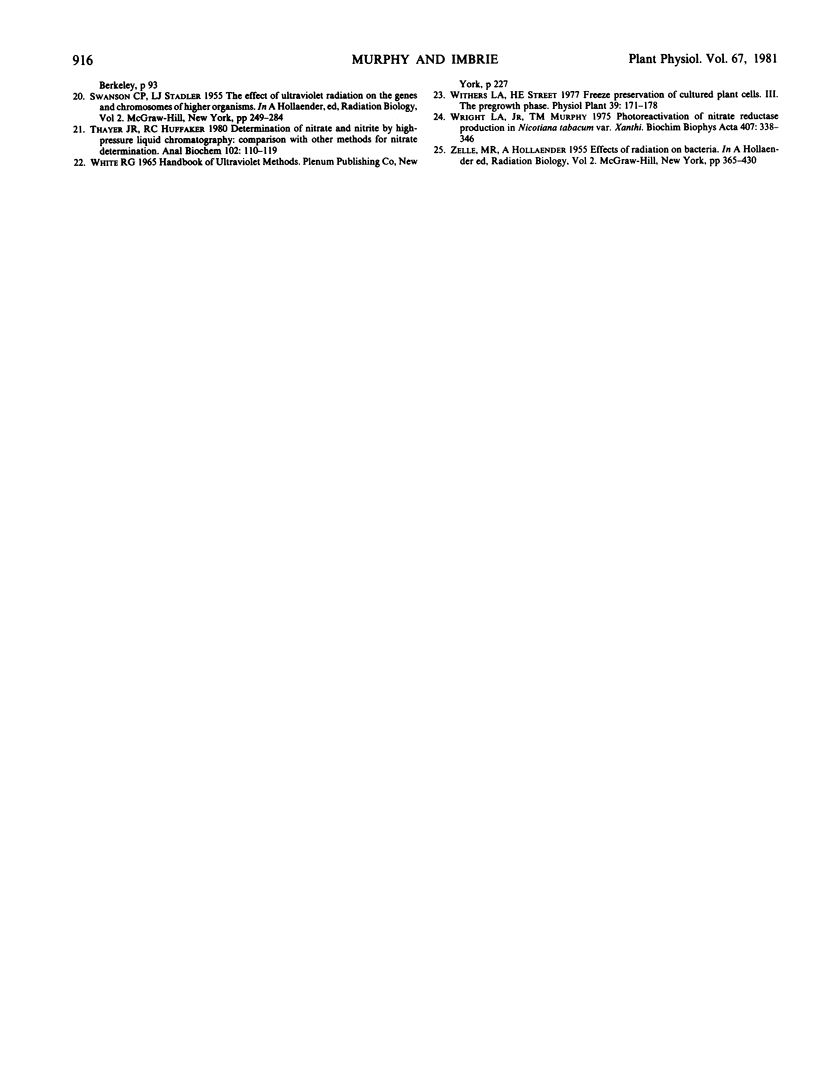
Images in this article
Selected References
These references are in PubMed. This may not be the complete list of references from this article.
- Cove D. J. Cholorate toxicity in Aspergillus nidulans: the selection and characterisation of chlorate resistant mutants. Heredity (Edinb) 1976 Apr;36(2):191–203. doi: 10.1038/hdy.1976.24. [DOI] [PubMed] [Google Scholar]
- Forget P. The bacterial nitrate reductases. Solubilization, purification and properties of the enzyme A of Escherichia coli K 12. Eur J Biochem. 1974 Mar 1;42(2):325–332. doi: 10.1111/j.1432-1033.1974.tb03343.x. [DOI] [PubMed] [Google Scholar]
- Howland G. P. Dark-repair of ultraviolet-induced pyrimidine dimers in the DNA of wild carrot protoplasts. Nature. 1975 Mar 13;254(5496):160–161. doi: 10.1038/254160a0. [DOI] [PubMed] [Google Scholar]
- Murphy T. M., Hamilton C. M. A Strain of Rosa damascena Cultured Cells Resistant to Ultraviolet Light. Plant Physiol. 1979 Dec;64(6):936–941. doi: 10.1104/pp.64.6.936. [DOI] [PMC free article] [PubMed] [Google Scholar]
- Puig J., Azoulay E., Pichinoty F. Etude génétique d'une mutation à effet pléiotrope chez l'Escherichia coli K 12. C R Acad Sci Hebd Seances Acad Sci D. 1967 Mar 13;264(11):1507–1509. [PubMed] [Google Scholar]
- Seki T., Nozu K., Kondo S. Differential causes of mutation and killing in Escherichia coli after psoralen plus light treatment: monoadducts and cross-links. Photochem Photobiol. 1978 Jan;27(1):19–24. doi: 10.1111/j.1751-1097.1978.tb07559.x. [DOI] [PubMed] [Google Scholar]
- Singh H. N., Sonie K. C. Isolation and characterization of chlorate-resistant mutants of the blue-green alga Nosoc muscorum. Mutat Res. 1977 May;43(2):205–212. doi: 10.1016/0027-5107(77)90004-5. [DOI] [PubMed] [Google Scholar]
- Thayer J. R., Huffaker R. C. Determination of nitrate and nitrite by high-pressure liquid chromatography: comparison with other methods for nitrate determination. Anal Biochem. 1980 Feb;102(1):110–119. doi: 10.1016/0003-2697(80)90325-5. [DOI] [PubMed] [Google Scholar]
- Wright L. A., Jr, Murphy T. M. Photoreactivation of nitrate reductase production in Nicotiana tabacum var. Xanthi. Biochim Biophys Acta. 1975 Oct 15;407(3):338–346. doi: 10.1016/0005-2787(75)90101-x. [DOI] [PubMed] [Google Scholar]



